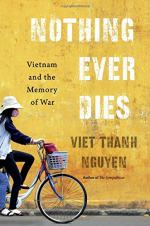|
This section contains 1,256 words (approx. 4 pages at 400 words per page) |

|
Summary
Chapter Three focuses on Nguyen’s view of the “inhumanities.” He opens the chapter by noting that refugee populations in the United States want recognition and remembrance and thus build monuments to members of their communities. These monuments, like all memorials, often ignore the fact that we can engage in unjustified harm. This trend is common; people rarely want to admit that they or their own can act immorally. However, Nguyen argues that ethical memory requires us not only to remember others, but to acknowledge our own ability to cause harm. He refers to this as “recognition” (71). Recognition requires us to accept that “humanity” and “inhumanity” are always linked, even in otherwise tolerant societies. All humans are capable of terrible acts; their inhumanity cannot be separated from their humanity. This understanding further allows us to prevent future wars. While the ethics of remembering others...
(read more from the Chapter 3 Summary)
|
This section contains 1,256 words (approx. 4 pages at 400 words per page) |

|




